Iceland is a majestic place off the coast of Europe.
The island nation has a long history which you can gain tidbits about from just walking around the capital.
Being far from it all has benefits and drawbacks when you consider the quality of life overall.
Come with us as we explore what it’s like to live in a small but prosperous place with both glaciers and city life.
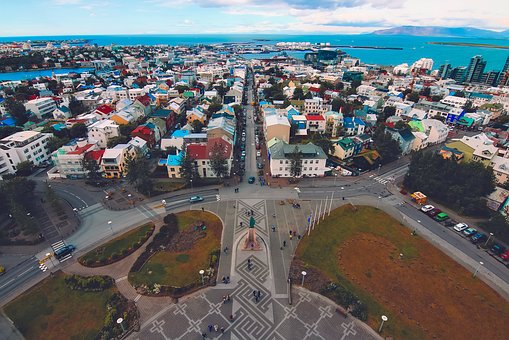
Contents
Pros of Living in Iceland
1. Equal Pay
The women of Iceland do not have to fight to make the same as their male counterparts.
As of 2018, a law was enacted that requires businesses with more than 25 employees to be able to show proof that they keep the pay scale even.
In other words, men and women are, by law, required to be paid fairly.
Companies are transparent about salaries and that is a major step in the worldwide stage of closing the gender pay gap.
2. Scenic Beauty
Iceland is basically an island country.
Unlike Hawaii, Iceland is too far north to feel like the tropical getaway that you imagine when you think of islands.
However, much like Hawaii, there is so much beauty. Iceland is full of mountains and glaciers.
You do not even need to go that far to see a mountain, you can get a glimpse from downtown Reykjavik, the capital.
To see glaciers, you can just drive north.
3. Walkable Streets
Iceland is small, so it really needs to act as a unit.
What better way is there to show togetherness than for the government to do more for the people?
One of those efforts is in the streets and sidewalks.
Iceland encourages its citizens to get out and explore on foot by making it one of the most walkable cities.
The roads are very well marked and the sidewalks are a gift.
Not only are they offset from the street, to avoid any potential casualties, but they are divided.
One sidewalk is completely devoted to cyclists and the other is for walkers.
There is also a barrier between the two, so no overlap.
4. Fun Attractions
Iceland has one of the most unique churches in the world.
You can tour it, but you can also do what most people do and pose for pictures right next to the Lief Erikson statue out front.
It is quite a magical backdrop, especially at sunset when the light bounces off the jagged design of the church.
If you’re up for a bit of a whimsical pursuit, you can get an anatomy lesson at the Icelandic Phallological Museum, also in Reykjavik.
5. Natural Hot Springs
Speaking of fun attractions, the most popular thing to do in Iceland for tourists is to go to the Blue Lagoon.
Thanks to geothermal seawater, you can get one of the most amazing experiences of your life with a visit.
The spa-like features include an outdoor hot pool.
It may sound crazy, but getting in those super warm waters when the air is crisp outside feels fantastic for the body.
If you are local, there are many more places to go than Blue Lagoon with similar offerings.
6. Viðey Island
As remarkable as this part of Iceland is, you do not see a lot of people talking about this spot off the coast of Reykjavik.
Perhaps that is part of the charm.
It takes less than 10 minutes by ferry to get from the city to the abandoned Viðey Island. Back in the day, people lived and had entire communities on Viðey as part of a fishing company.
After WWII, the inhabitants left and what remains is both eerie and interesting.
You can walk the entire island in a few hours.
There is still a church, a graveyard, and remnants of buildings.
7. Imagine Peace Tower
In a showing of goodwill, Yoko Ono erected the Imagine Peace Tower on Viðey Island.
It is basically a base with an enormous giant light across the bay from downtown.
It was constructed in memory of John Lennon.
Around the white base are tiles that say Imagine Peace in a multitude of languages.
It is only lit a few times a year, such as on John Lennon’s birthday.
Yoko makes sure to be in person for the lighting.
8. Health Care
The health care system in Iceland is budget-friendly and more concise than in other places in the world.
For example, if you are having pain and go to the doctor, you just go.
If the doctor orders more testing, like an x-ray, you do not have to schedule for another day.
You walk over, get it done, and get results at the same appointment.
On your way out, the majority of the visit is paid for through taxes.
Cons of Living in Iceland
1. Cost of Living
While it is a wonderful thing that workers in Iceland make more than the average bear, in comparison to other parts of Europe, it’s for a good reason.
Iceland is simply a very expensive place to live.
Aside from not having a McDonald’s for health reasons, the reality is that they could not afford to offer cheap food.
One of the fast-food burger joints in Reykjavik would cost $32 to have two regular burgers, one order of fries, and two beverages.
2. Proximity to Goods
One of the reasons why things are so ghastly expensive is location.
As any good realtor will tell you, everything is about location, location, location.
Iceland just so happens to be far west of Europe.
In fact, it is closer to Greenland than anything else.
Greenland is basically the North Pole. Naturally, exports to Iceland run up massive costs because it takes forever for shipments to come in.
3. Attitude to Foreigners
Unlike French or Spanish, Icelandic isn’t a language that anyone outside of Iceland would know.
The population of the entire country is around 365,000, which is exactly 1,000,000 less than the city of Dallas, Texas.
Unsurprisingly, people who come to Iceland only know a handful of words to get around.
Maybe it is the cold or the lack of language, but those who visit Iceland note that they often get rude responses or are even dismissed at most places they visit.
4. Central Population
An overwhelming majority of Iceland’s citizens live in Reyjkavik.
That makes the rest of the country more difficult to explore since it is really not completely developed.
That is not to say that there are no people around the island.
There is just not a whole lot to do outside of the capital city.
There are national parks and glaciers to the east and north so there are always expeditions for nature seekers.
5. Sulfur Water
If you are not used to it, sulfur water is quite a culture shock.
You immediately know someone has taken a shower just walking into a home due to the smell.
For someone new, sulfur is impossible to ignore as it sits heavily in the air.
The water used for showering is not the same water used for drinking, but it is still noticeable.
The taste is also different.
The water has sort of an oily texture to it.
It is nothing to worry about, however.
It is natural and geothermic in origin.
6. Winter Weather
Due to its northern proximity, Iceland has pretty bleak winters that get particularly cold.
It is not that surprising, considering the nearest neighbor is Greenland.
Most winter days hover around 32 degrees Fahrenheit.
So, even though the sidewalks are everywhere, there is a chunk of the year when no one uses them.
It is simply too cold to be out that long.
The summer is a respite from the cold, but it does not really get that much above 65 degrees.
7. Pubilc Transportation
It’s funny how often the sidewalks come up, but here we are again.
Another reason to use them is that public transportation is a headache.
The system is confusing and rarely on time.
That can be a massive problem for things like getting to the airport, which is about an hour or so outside of town.
It is also quite expensive, despite the downfalls.
8. Business Fluctuations
Since it is so remote, Iceland has leaned on tourism to help pump up the local economy.
Over the past decade or so, there has been a huge push to bring people there.
Efforts include dropping airline rates and offering deals for people who layover in Iceland on their way to another destination.
Unfortunately, when budget airliner WOW Air closed down shop, a lot of tourism went with it.
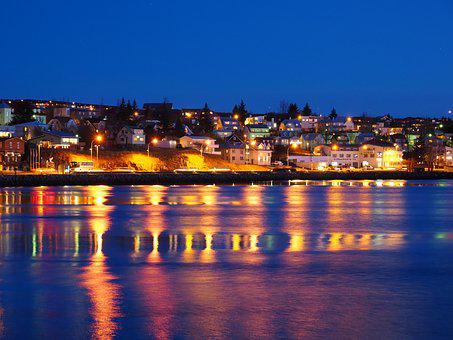
Pros and Cons of Living in Iceland – Summary Table
| Pros of Living in Iceland | Cons of Living in Iceland |
|---|---|
| 1. Equal Pay | 1. Cost of Living |
| 2. Scenic Beauty | 2. Proximity to Goods |
| 3. Walkable Streets | 3. Attitude to Foreigners |
| 4. Fun Attractions | 4. Central Population |
| 5. Natural Hot Springs | 5. Sulfur Water |
| 6. Viðey Island | 6. Winter Weather |
| 7. Imagine Peace Tower | 7. Pubilc Transportation |
| 8. Health Care | 8. Business Fluctuations |
Iceland Safety Overview
READ THE FULL REPORT: Iceland Safety Review
Safety Index: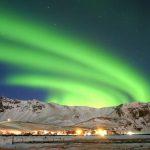
- OVERALL RISK: LOW
- TRANSPORT & TAXIS RISK: LOW
- PICKPOCKETS RISK: LOW
- NATURAL DISASTERS RISK: MEDIUM
- MUGGING RISK: LOW
- TERRORISM RISK: LOW
- SCAMS RISK: LOW
- WOMEN TRAVELERS RISK: LOW
Frequently Asked Questions
Are there waterfalls in Iceland?
Yes!
Iceland may as well be called the land of waterfalls because there is somewhere in the neighborhood of 10,000 on record.
Do you need a car in Reykjavik?
Not especially.
Would it be convenient?
Yes.
However, it really is not a stretch to say that you can walk all over the city.
You could even walk and take public transportation back if you have the patience to get where you are going at the transport’s timing.
What is the cheapest place to get food in Iceland?
Bæjarins Beztu Pylsur.
This is a hot dog chain around Iceland that has been around for almost a century.
This company has walk-up hot dog stands around the country and is hailed as the best hot dog in the world.
They are lamb based with a condiment crunch.
Three hot dogs, a chocolate bar, and two drinks will set you back at around $24.
How big is the national park in Iceland?
There are three national parks in the country.
Two of the three are world heritage sites designated by UNESCO.
Vatnajökull National Park takes up 13% of the whole country and is one of the largest in all of Europe.
Þingvellir National Park is just over half an hour outside of Reykjavik and is home to the largest natural lake in the country.
Snæfellsjökull National Park is the only non-heritage site but has been used since Medieval times.
Is the Icelandic Phallological Museum inappropriate?
No, it is more educational than anything else.
That is, once you get past the giggling, of course.
The museum is really made up of ‘specimens’ from a wide variety of male animals.
Animals are the keyword here.
There are opportunities for laughs in the purposeful decorations, but the museum is not anything you cannot take children to.
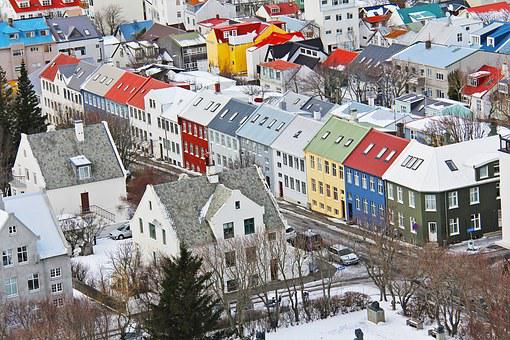
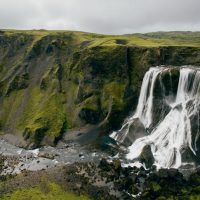
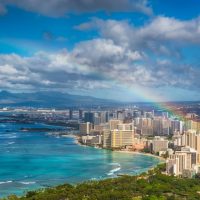

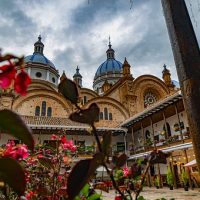

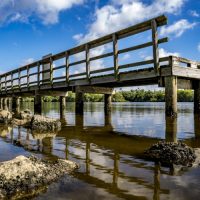





Iceland is a beautiful and unique place to live, with equal pay, walkable streets, and natural hot springs being some of the many pros. However, the high cost of living, remote location, and harsh winter weather can be challenging for some.